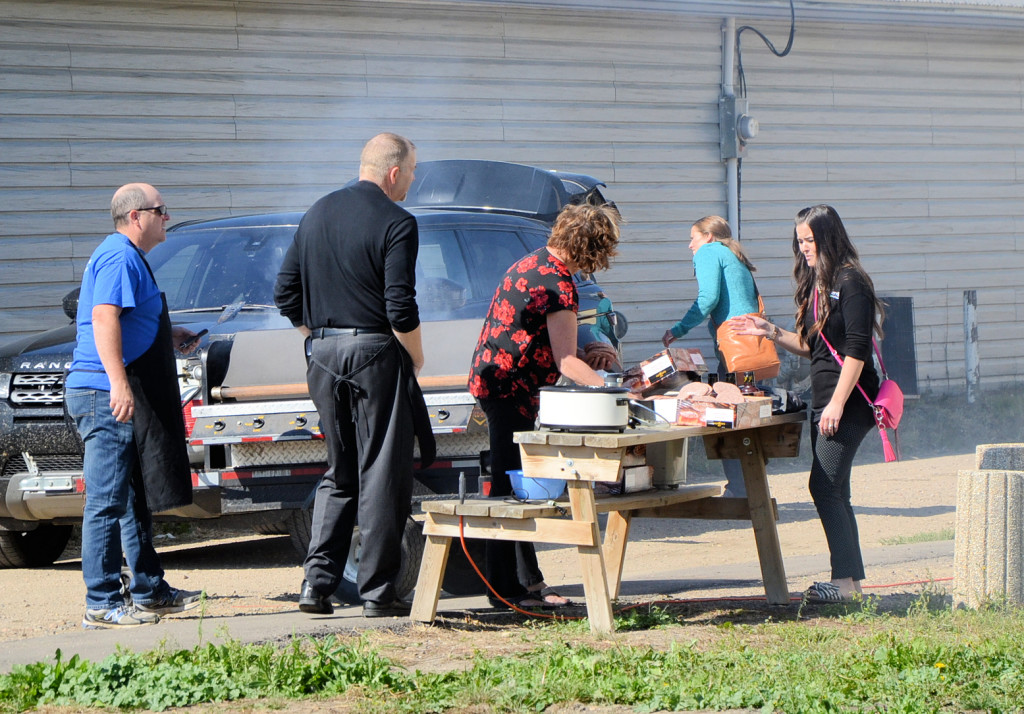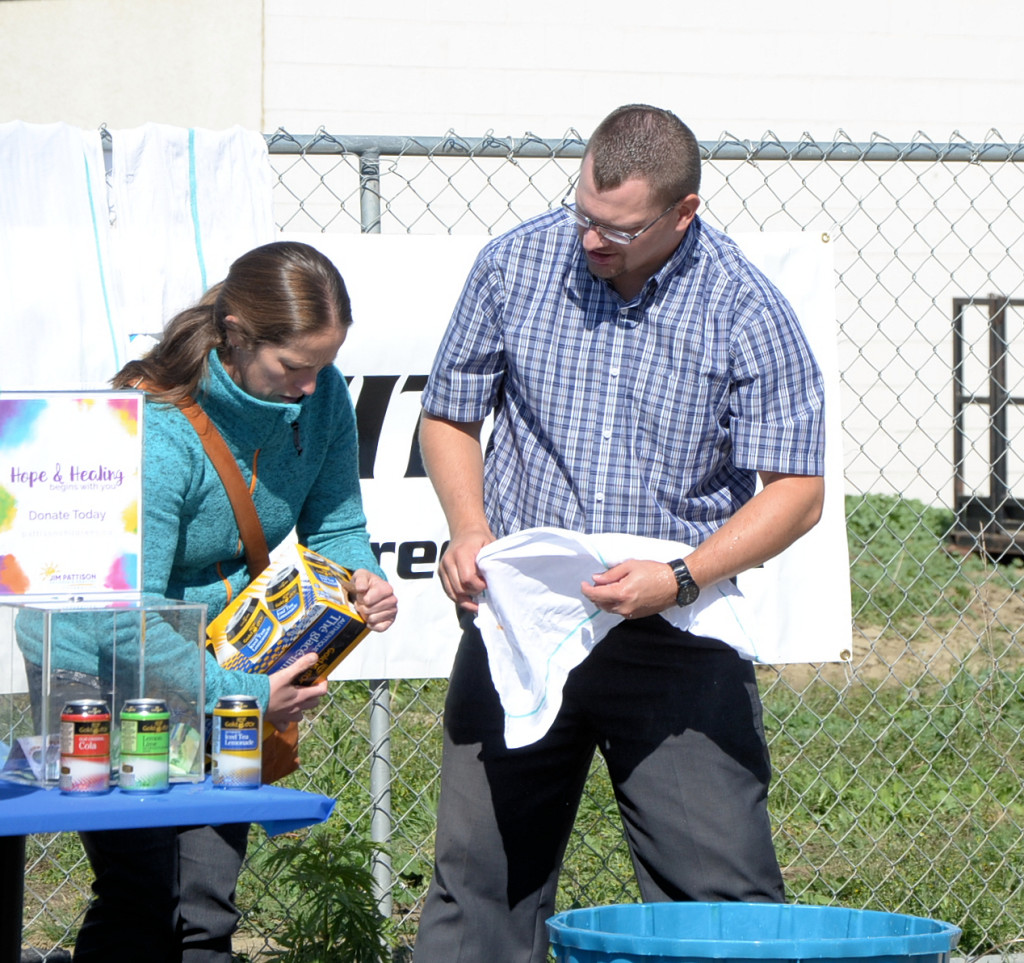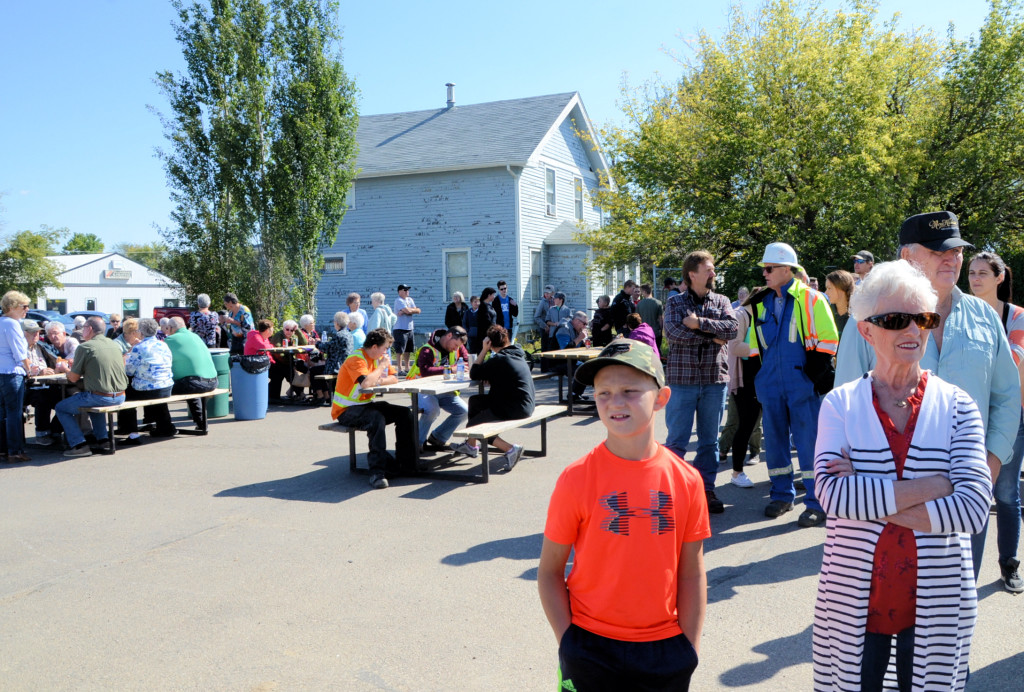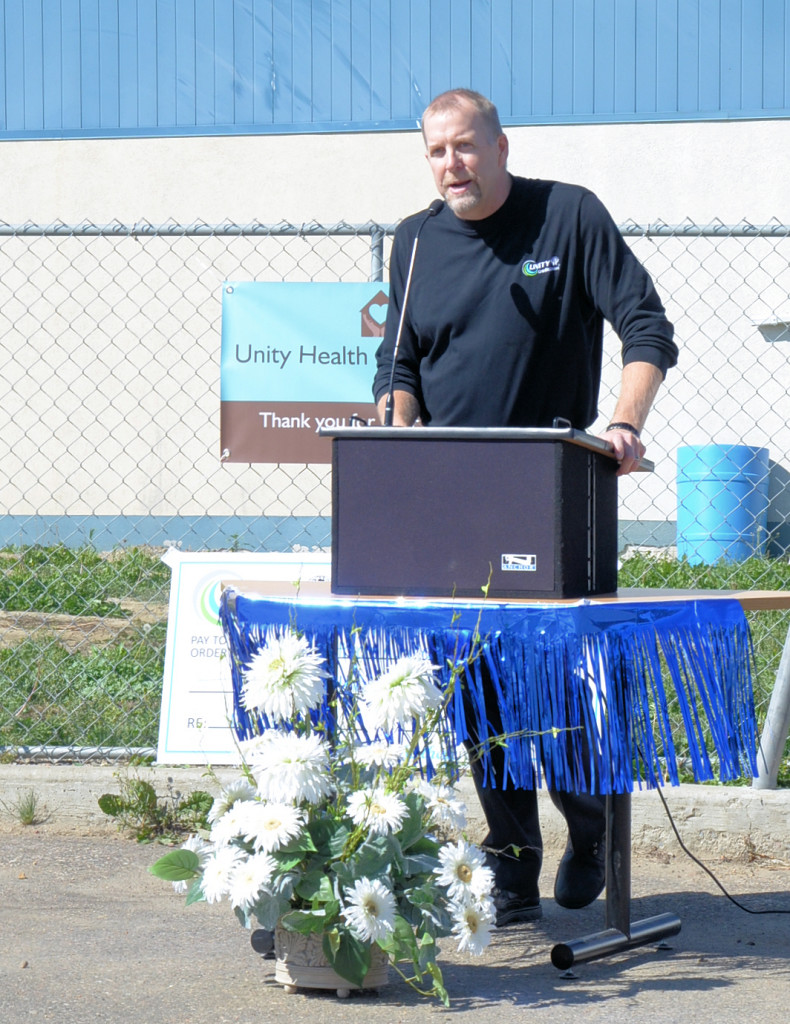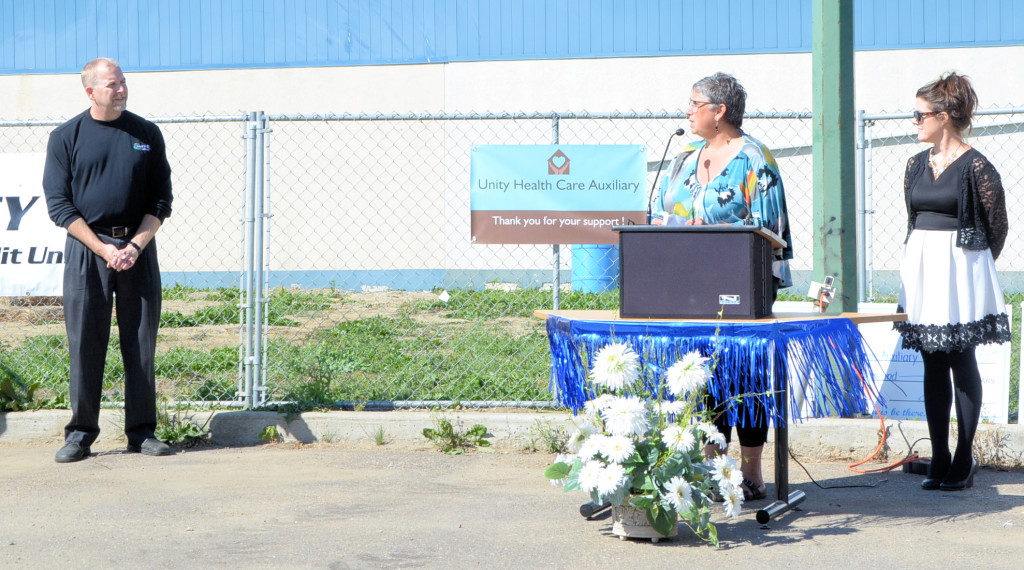By Kathy Heilman
The West Central Municipal Government Committee, made up of towns, villages and rural municipalities in West Central Saskatchewan learned about STARS, the Shock Trauma Air Rescue Society, from Cindy Seidl at a meeting in Landis in August. STARS operates helicopters equipped with medical equipment to help save lives. Each helicopter is staffed by two pilots, a nurse, a paramedic and sometimes an emergency room doctor.
Seidl, who was born in Wilkie and is the granddaughter of Frank and Josie Miller, and the daughter of Ken and Joan Miller of Biggar, is the Saskatoon STARS base director. She has 18 years of experience as co-ordinator with Saskatchewan Air Ambulance.
When a patient presents at a health facility in rural Saskatchewan with, for example, heart attack symptoms, there are a series of questions to answer to determine the quickest way to get help to the patient. One important factor considered is that STARS takes eight minutes to be in the air while the air ambulance needs 30 minutes. The decision is a co-ordinated effort between emergency room doctors, the transport physician, air ambulance personnel and staff at the health care facility. The decision is made in approximately 60 seconds.
STARS has a range of 250 kilometers, which is the same distance the air ambulance can travel. The air ambulance can fly higher and avoid possible bad weather but needs an air strip to land; STARS can land on a designated spot in any rural community.
In Wilkie, the landing site for STARS is presently at the Wilkie town shop. Heartland representatives at the meeting said plans are in the works to prepare a site near the health centre, to make access to the patient quicker. In Unity, STARS lands in the open field in front of the health centre.
STARS can also be accessed by calling 911, said Seidl. This usually happens when there is a motor vehicle accident or an incident in the country. The same protocol is used to determine who should go to assist. STARS can land just about any place. Those on site – fire department, police, EMTs –can indicate to the pilots the best place to land.
Once the STARS helicopter gets to Saskatoon, it lands at a designated spot at Wilson Greenhouse for patients going to Royal University Hospital (RUH). If the patient is headed to St. Paul’s Hospital, they land at the John Diefenbaker Airport. The Children’s Hospital, scheduled for completion in 2016, will have a helipad right on the building. Currently the majority of the patients transported by STARS go to RUH.
STARS does not charge for picking up patients, but Saskatchewan Health charges $350, which can be recouped with health insurance. Under a 10-year agreement with the province, STARS is funded 50 per cent by the province and 50 per cent from donations and fundraising. Their budget is $21 million a year.
Seidl said the Saskatoon base is the second busiest of all the cities that have STARS service. STARS started out in Calgary, Alta., and now operates out of Edmonton and Grande Prairie, Alta., Winnipeg, Man., and Regina as well as Saskatoon.
Please see page 3 of the September 9 issue of the Unity-Wilkie Press-Herald for additional details in the printed version of this story.


